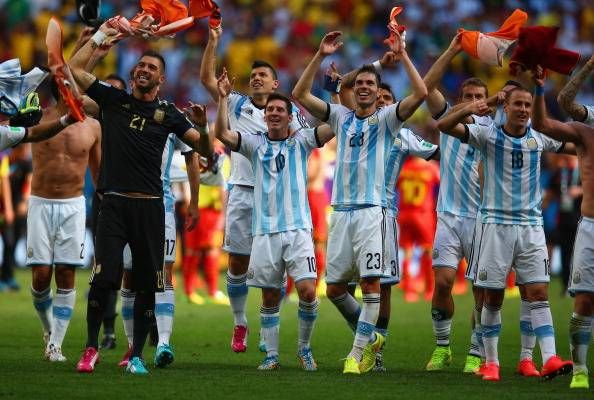
Argentina: Team Preview - 2015 Copa America

The wait is nearly over.
This year’s Copa America, hosted by Chile for the first time in 24 years, is arguably the most eagerly-anticipated instalment yet. Boasting some of the best and brightest talents in world football, there are more than enough reasons to tune in, and if the big names validate themselves, there’s sure to be yet more excitement on offer to keep us all entertained during European clubs’ domestic off-season.
La Albiceleste have not won anything of note in quite some time and they’ve not clinched glory in this tournament since 1993 – that’s a wait of 22 long years which they’ll be eager to ensure doesn’t extend any further. Billed as their best opportunity to snatch victory by many, the pressure is well and truly on, but if they can maintain focus and self-belief they ought to justify the lofty expectations.
After all, this is a team which reached the World Cup final in 2014, so they’ll be expected to push absolutely everyone all the way to victory.
Squad
Lionel Messi. Messi, Messi and...oh, did we mention Messi?
Not to get all Nigel Pearson on you, but in case you’ve had your head buried in the sand for the last decade or so you’ll be well aware that Barcelona star Messi is the best player in the world and he’s also in the Argentina squad.
Coming off the back of one of his finest season’s to date, the diminutive maestro remains very much in control of his own destiny having netted 58 goals between the league, cup and European treble he helped bring back to Catalonia.
Clearly the finest player in the modern-day era, he has the capacity to unlock every single defence he faces in the coming few weeks – but he won’t be able to do absolutely everything on his own (despite popular opinion to the contrary). No, he’ll need the help and assistance of a more than capable supporting cast, many of whom have the necessary experience, guile and craft to make this a memorable visit to the Land of Poets.

Angel Di Maria, too, will be hoping to make a splash in Chile after his rather disappointing debut season at Manchester United in England. Having had his impact lessened with the Red Devils due to personal problems as well as the difficulty with getting settled into a new club, Fideo ought to use this as springboard for his somewhat stalled career.
His name is one in a long line of top stars that also includes Sergio Aguero, who bagged 26 league goals for Manchester City in the season just gone by, Carlos Tevez who had a memorable double-winning season with Juventus as well as Tottenham Hotspur midfielder Erik Lamela – among many others.
Simply put, Argentina have a perfect blend of youth and experience which should help them dominate Group B.
Goalkeepers: Sergio Romero, Nahuel Guzman, Mariano Andujar.
Defenders: Pablo Zabaleta, Facundo Roncaglia, Ezequiel Garay, Martin Demichelis, Nicolas Otamendi, Marcos Rojo, Milton Casco.
Midfielders: Lucas Biglia, Roberto Pereyra, Javier Mascherano, Ever Banega, Fernando Gago, Erik Lamela, Javier Pastore, Angel Di Maria.
Strikers: Lionel Messi, Sergio Aguero, Carlos Tevez, Gonzalo Higuain, Ezequiel Lavezzi.
Coach
Having lambasted his own time at Barcelona as a failure, Gerardo Martino might not be the ideal candidate to bring success to Argentina after such a protracted wait. After all, a coach who doubts themselves often doubts their players, and that’s rarely a healthy environment.
In his own words, his tenure with the reigning Spanish champions taught him very little and he has rarely been shy to discuss that fact openly ever since he left the club back in mid-2014, as the following quote clearly attests to.
I didn’t make any mark on Barcelona, it was a bubble in my career in terms of what I did as a coach.
Winning just the Spanish Super Cup during his one year there, “Tata” looked out of his depth at times when in charge of the Blaugrana. Fortunately, his post as head honcho of the Argentine national set-up demands a lot less from him much less often.
Not quite as burdened by assumptions and calculations that often bring with it the expectation of silverware, he has had time to get to grips with his players and will feel glad that he has redeemed himself quite a bit ever since he took charge.
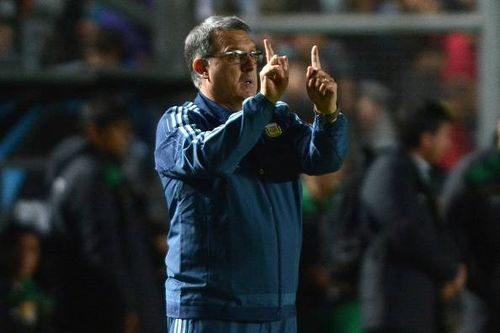
Nevertheless, he does still have quite a number of obstacles to overcome. First and foremost, his biggest challenge will be getting the best out of his players. Ordinarily, it can be a testing undertaking to motivate one’s players, but it promises to be doubly taxing considering the players have just come off the back of a busy domestic campaign. If he can do that properly, we should see Argentina represent themselves with pride, purpose and pomp.
Secondly, it will be interesting to see whether or not he can get his players to play their best possible football against their toughest opponents. Having routed Bolivia 5-0 in a recent friendly, he will know they can gel as a team when they want, but in a rigorous competition such as this one, peaking at the right time often means everything and more.
Best Starting XI
(4-4-2 Formation)
Goalkeeper: Sergio Romero
Defenders: Marcos Rojo, Nicolas Otamendi, Ezequiel Garay, Facundo Roncaglia.
Midfielders: Ever Banega, Javier Mascherano, Angel Di Maria, Lionel Messi.
Forwards: Sergio Aguero, Carlos Tevez.
Formation and Tactics
Looking at it with fresh eyes, it’s obvious that Martino has experimented with a number of varying formations over the course of the past few months. Without a regularity to become accustomed to, most international coaches tend to tweak little aspects of a side over time and the ex-Newell’s Old Boys boss is certainly no stranger to that. For example, for their last four friendly ties, there have been a whole host of differences cropping up.
Against the Bolivians, a 4-3-3 saw the light of day. When they played El Salvador and Ecuador, it was 4-4-2. Up against Portugal, fans were treated to a convoluted 4-2-3-1.
On the one hand, not knowing his best formation could be viewed as a strength. If he’s not fully sure what it is, he can easily wrong-foot his opponents because they won’t know what to expect either. The flip-side of that, though, is that it will take them a few games to find their flow, and they’ll hope it arrives in time for their clashes against the big guns down the line.
On paper, the starting XI listed below has enough quality to out-play anybody on its day – trying to fit all of those parts into the optimum shape and idea, however, is sure to cause Martino a few restless nights in the coming days. Justifying the exclusion, on match-day, of Pastore, Gago or Lavezzi would make most fans dizzy with confusion, but these are the big decisions he will be forced to make in order to get Argentina moving as slickly as possible.
4-4-2 Formation
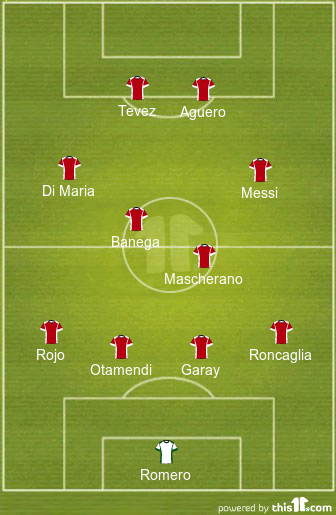
Implementing a system whereby both full-backs can launch themselves forward to help out in attack, as well as in midfield, provides the Argentines with another fantastic weapon, but it’s their midfield which should hold the key to winning any balance of power that should arise.
With Mascherano and Banega, Martino could opt to deploy a pivot system, whereby one could sit back while the other forages forward. Indeed, since Mascherano is a more than capable defender, he could sit quite deep and instigate counter-attacks, too.
Obviously, Messi carries the biggest danger here as he can choose to either create sumptuous assists or go for broke himself with his uniquely dazzling dribbles. Likewise, Di Maria will relish the chance to fashion opportunities for their deadly attacking duo.
4-2-3-1 Formation
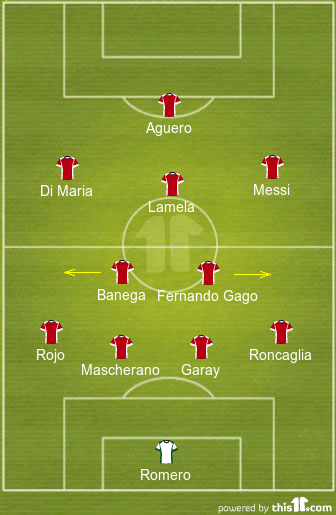
Arguably an even stronger set-up, this would allow them a far more solid foundation, although it might not create the fiery, latin panache the fans desperately crave.
Both Banega and Gago could monitor the midfield from a defensive perspective, but they would be more than adept at linking the defence to attack as well. With a wealth of attacking talent up front to provide balls into, they would also have the defensive back-up to immediately counter-act any attacks that might come their way should loose passes go astray.
Simply put, this is a more conservative approach at first glance, but it could become a necessity should they wish to protect a hard-fought lead mid-way through a tight contest.
History at the Copa America
The first year the competition changed its name from the Campeonato Sud Americano, Argentina failed to get out of their group despite hammering Venezuela 11-0 along the way. It was quite an underwhelming start to their new journey, especially considering they had won the South American championship a dozen times before the change in format.
Thankfully for their fans, things eventually got a little better after that 1975 disappointment and although it took 12 years, in 1987 they managed to finish in a respectable 4th spot. A year later, they did even better, topping their group as they conceded no goals in four matches despite eventually coming undone against Brazil and Uruguay in the final round of matches.
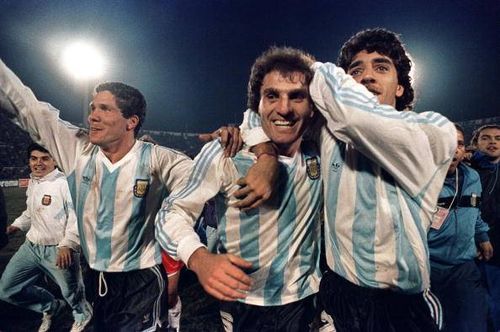
Undoubtedly the highlights of their Copa America journey to date, however, arrived in both 1991 and 1993 where they emerged as deserving champions on both occasions. Back then, they had the likes of Gabriel Batistuta, Diego Simeone and Claudio Caniggia to choose from so it’s little wonder they enjoyed a purple patch with such a wealth of stars to pick and choose from.
What’s more, it wasn’t just that they had good players, but a manager in Alfio Basile who knew how to optimise their performances with a simple but effective plan.
Interestingly, the last time Argentina won the competition, over 22 years ago, it was in Chile where it happened. Now, with an arguably better side at their disposal, their chance of success looks pretty decent – perhaps that little bit of symmetry will see them over the line.
| YEAR | RESULT |
| 1975 | Group Stage |
| 1979 | Group Stage |
| 1983 | Group Stage |
| 1987 | 4th Place |
| 1989 | 3rd Place |
| 1991 | CHAMPIONS! |
| 1993 | CHAMPIONS! |
| 1995 | Quarter-Finals |
| 1997 | Quarter-Finals |
| 1999 | Quarter-Finals |
| 2001 | Withdrew |
| 2004 | Runners-up |
| 2007 | Runners-up |
| 2011 | Quarter-Finals |
Prediction
Dominating their group would be a fantastic start, but as already mentioned, it’s likely to take them a few games to get into their stride.
Brazil, Chile and Colombia ought to be their biggest tests the further they migrate towards the final. Stopping their slide towards a 23rd year without the title will surely be a real priority, but it’s not going to cloud their preparations too much – nor will the fact they could equal Uruguay’s haul of 15 title triumphs.
No, La Albiceleste ought to set their sights on playing good football, getting results and taking each game as it comes, that way they’ll grow into themselves, get used to playing as a group again and won’t get side-tracked by records and history.
Regardless what happens it promises to be a joy watching them strut their stuff – it always is.
A win for the Argentines in the final with Messi to grab a fantastic double and end his season in style.